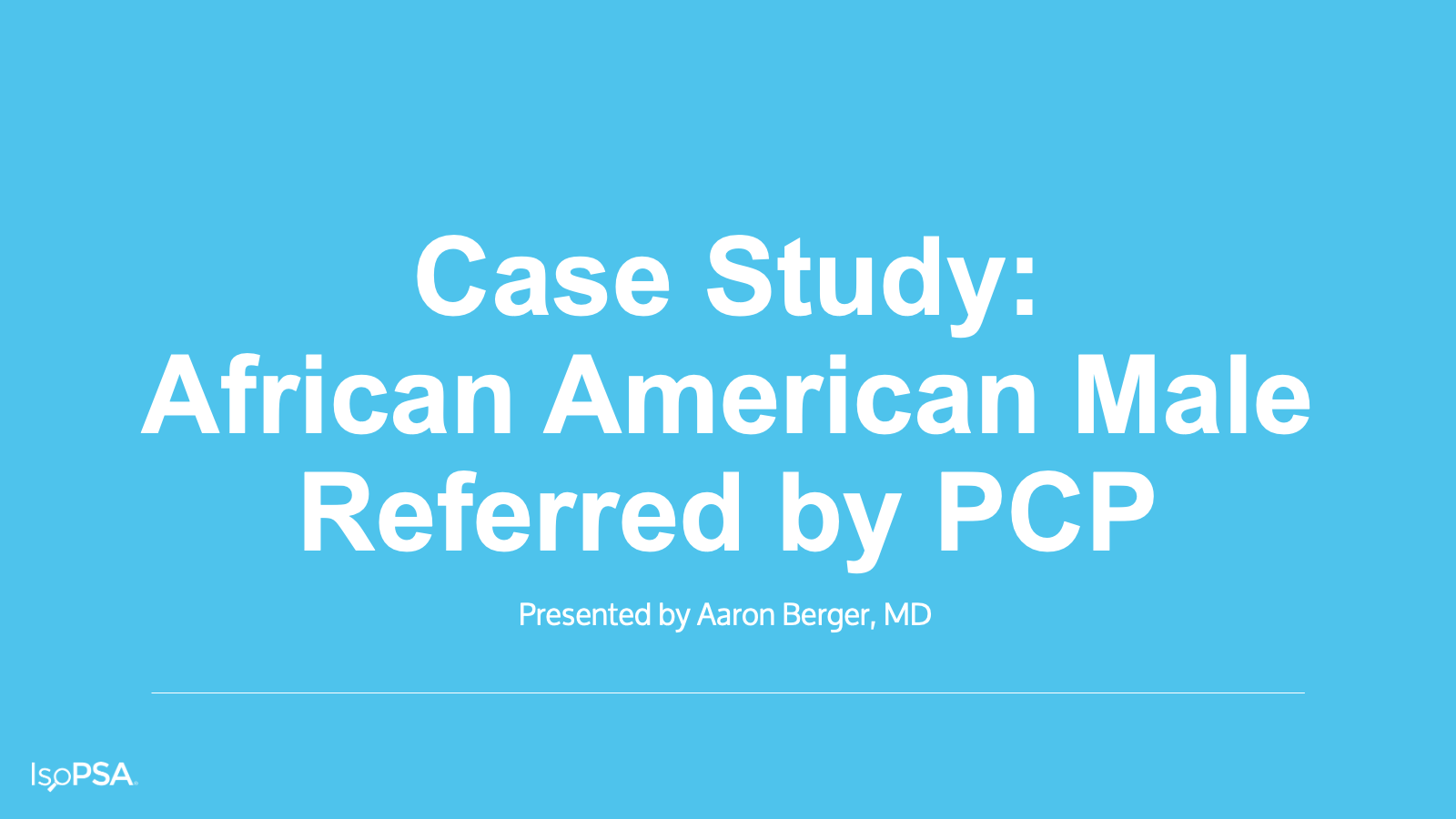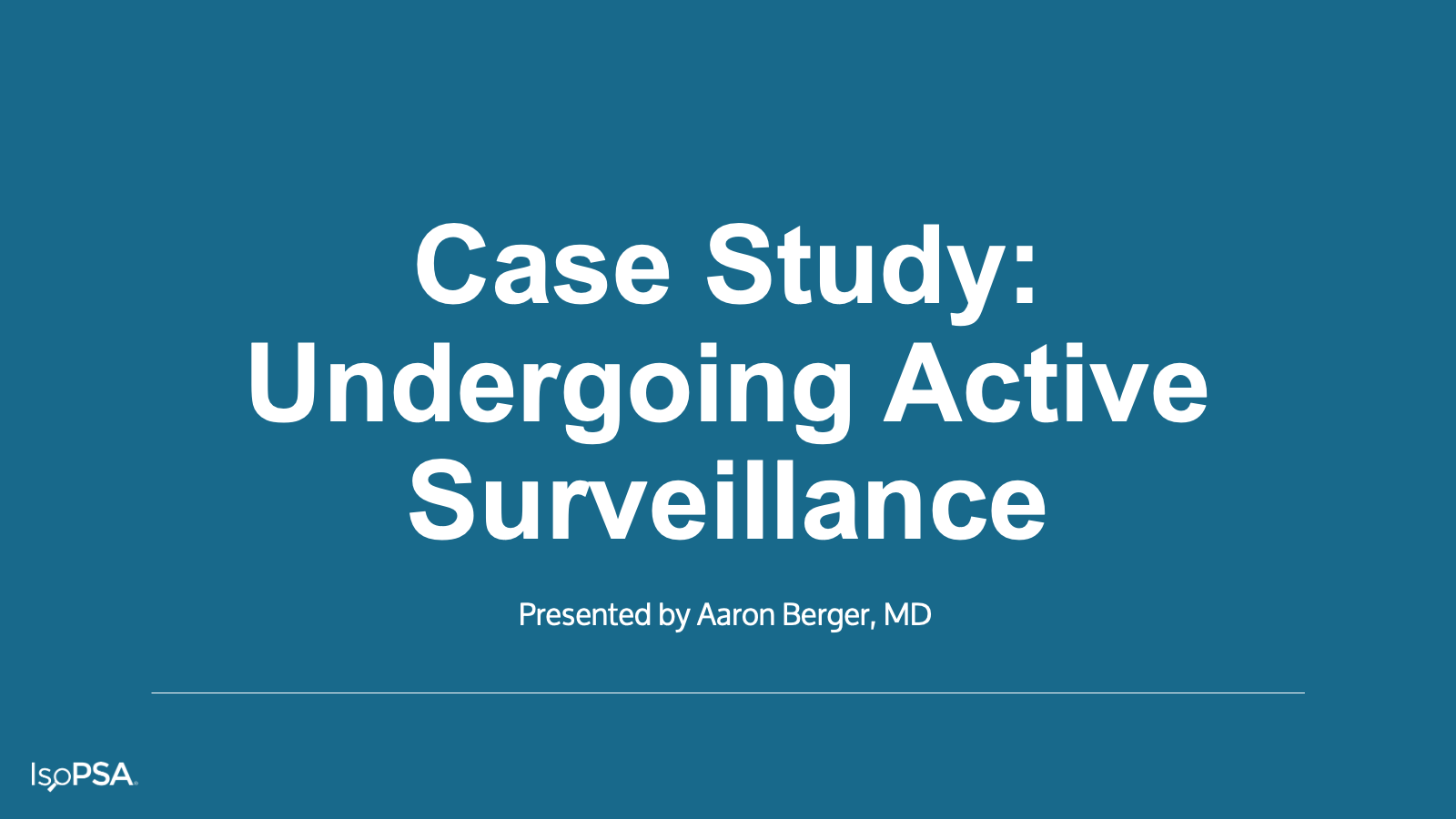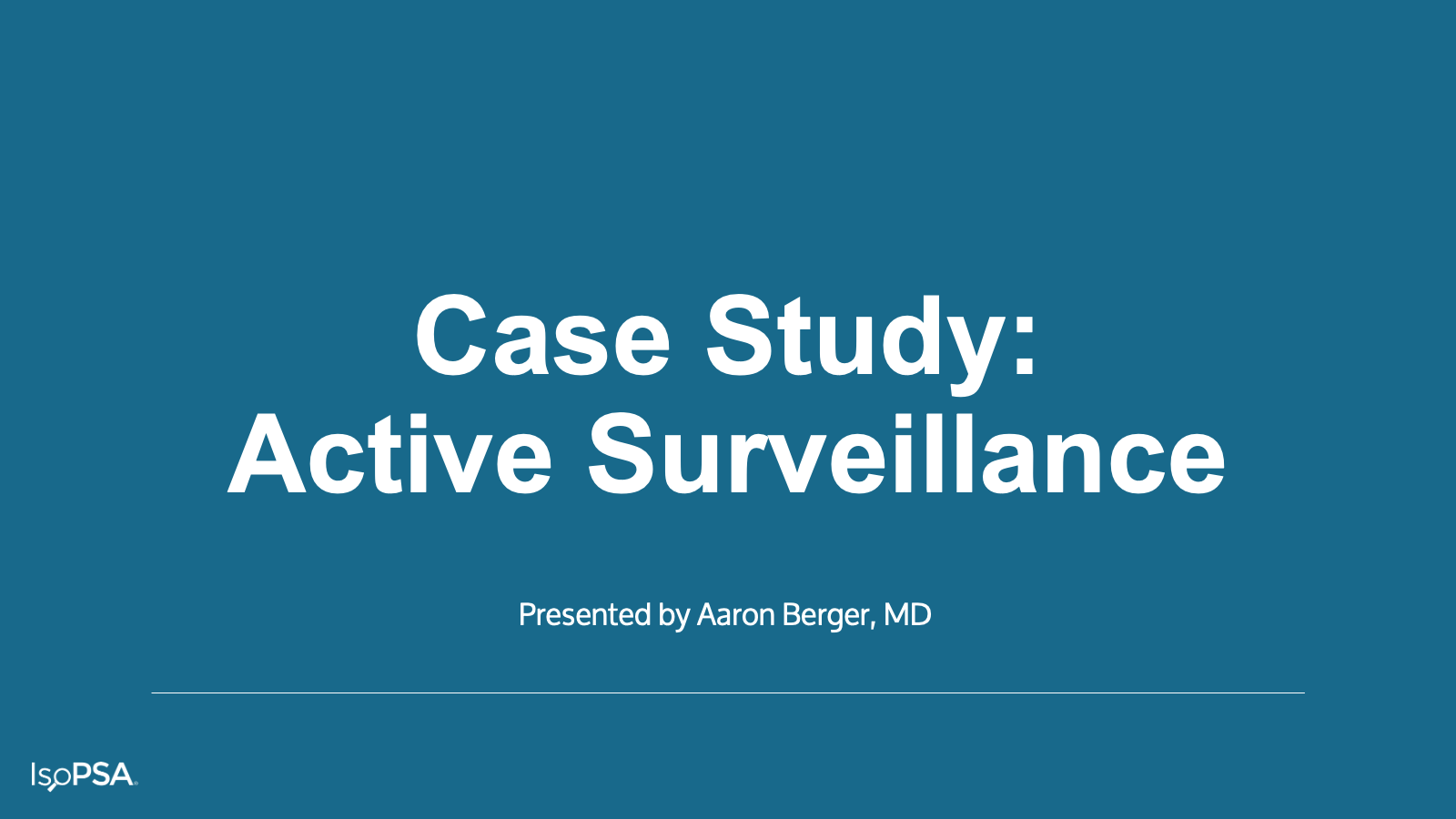Case Study: African American Referred by PCP
This case study involves a 62-year-old African American male referred by his PCP with a PSA of 6.2 ng/mL and DRE with no abnormal findings except prostate enlargement.
Case Study: Undergoing Active Surveillance
A 67-year-old patient on active surveillance originally presents with Grade Group 1 prostate cancer and is also being treated for BPH with 0.4mg tamsulosin daily.
Case Study: Borderline Biopsy
A 67-year-old male presents with a PSA of 4.5 ng/mL, no family history, and PI-RADS 3 on MRI.
Case Study: Convincing PSA Skeptics
This case study involves a 58-year-old male being treated for BPH whose PSA levels at 6.1 ng/mL and had a normal DRE other than enlargement (50gm prostate).
Case Study: Identifying csPCa
A 64-year-old male referred for PSA of 4.8 ng/mL, mpMRI read as “no findings suspicious for cancer” and prostate volume of 36cc.
Case Study: Active Surveillance
A 63-year-old male with Gleason 6 (GG1) prostate cancer currently on Active Surveillance, has family history of prostate cancer and a PSA of 7.2 ng/mL.
If you are interested in learning more about IsoPSA or how to offer IsoPSA to your patients, please contact us.








